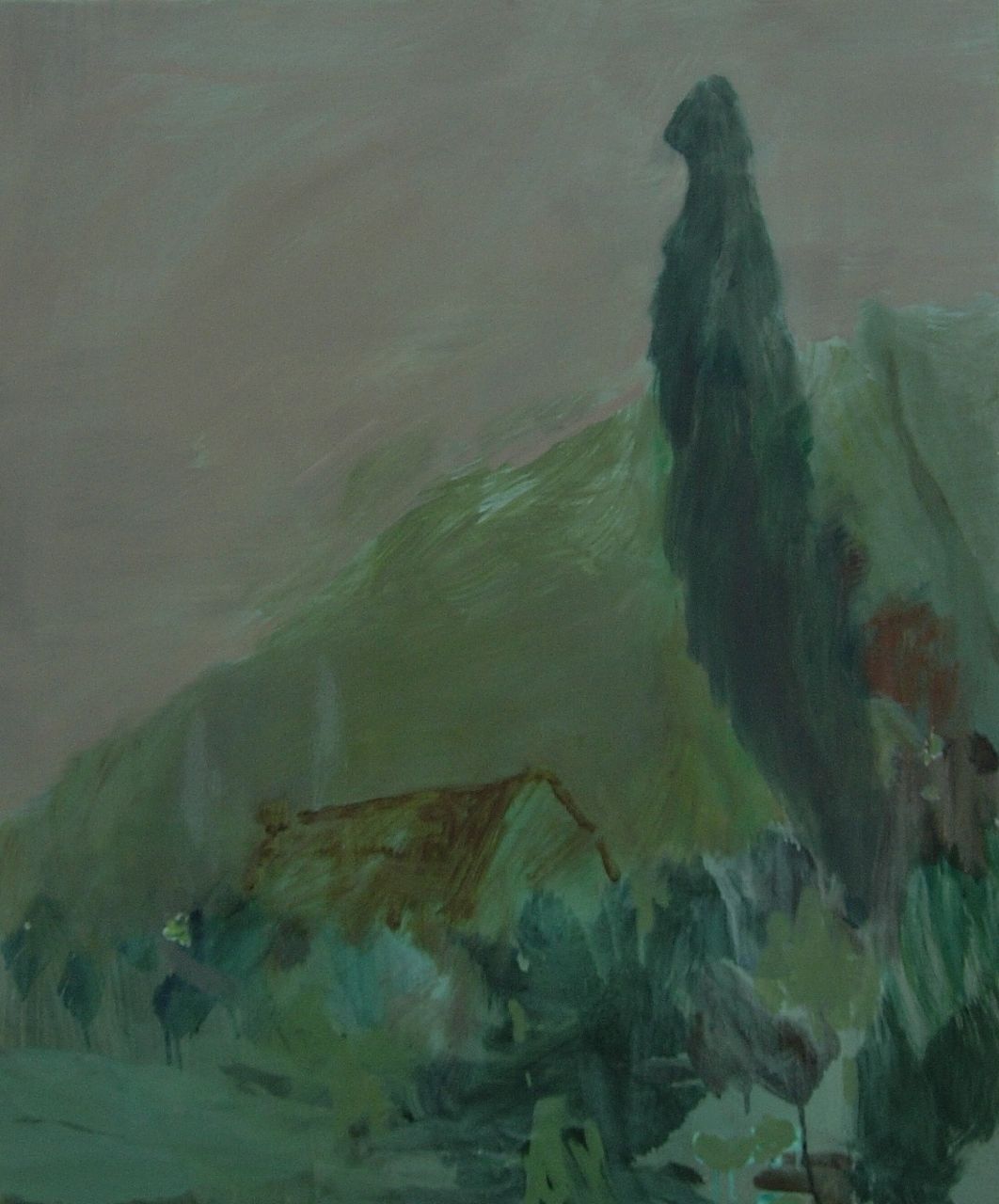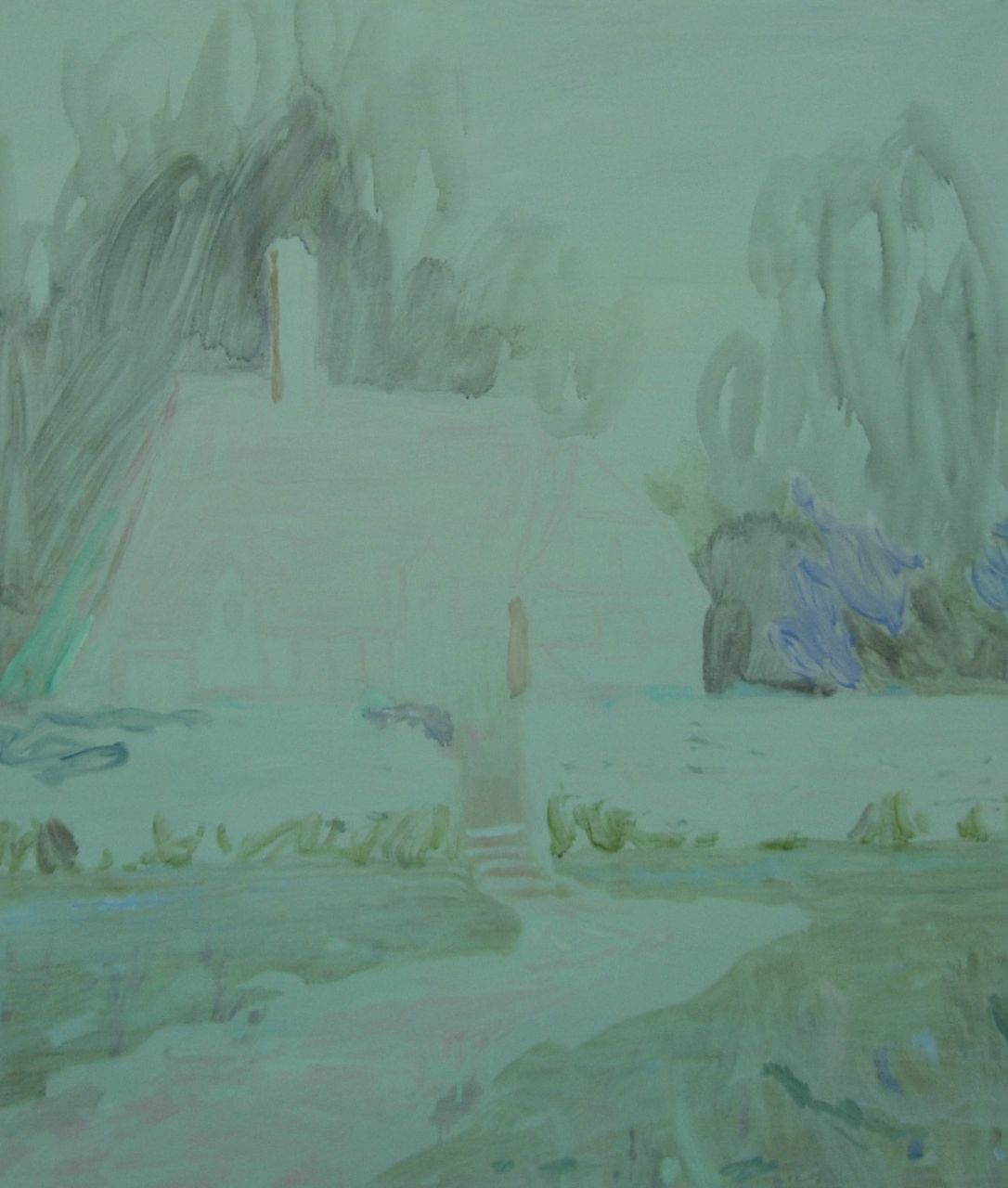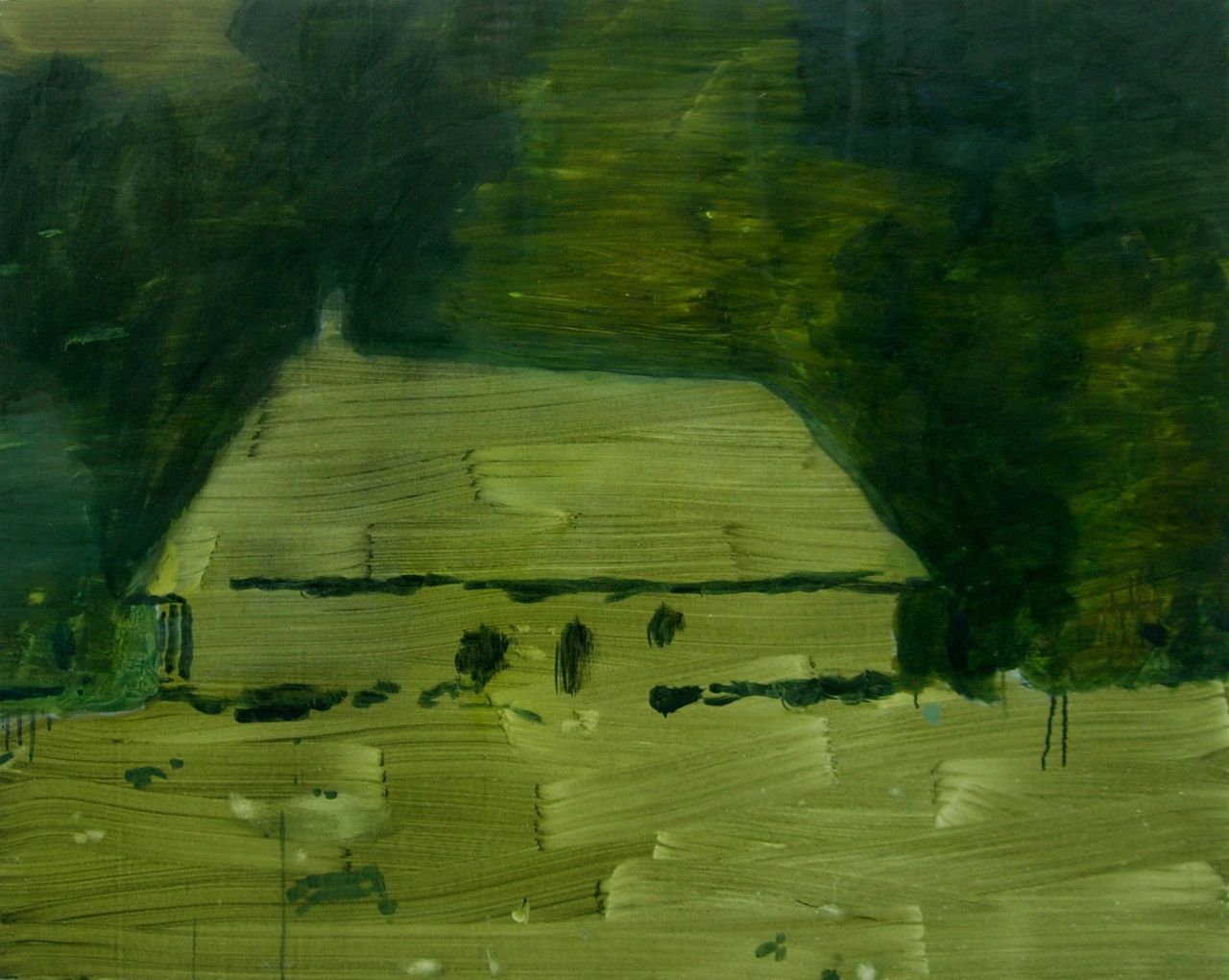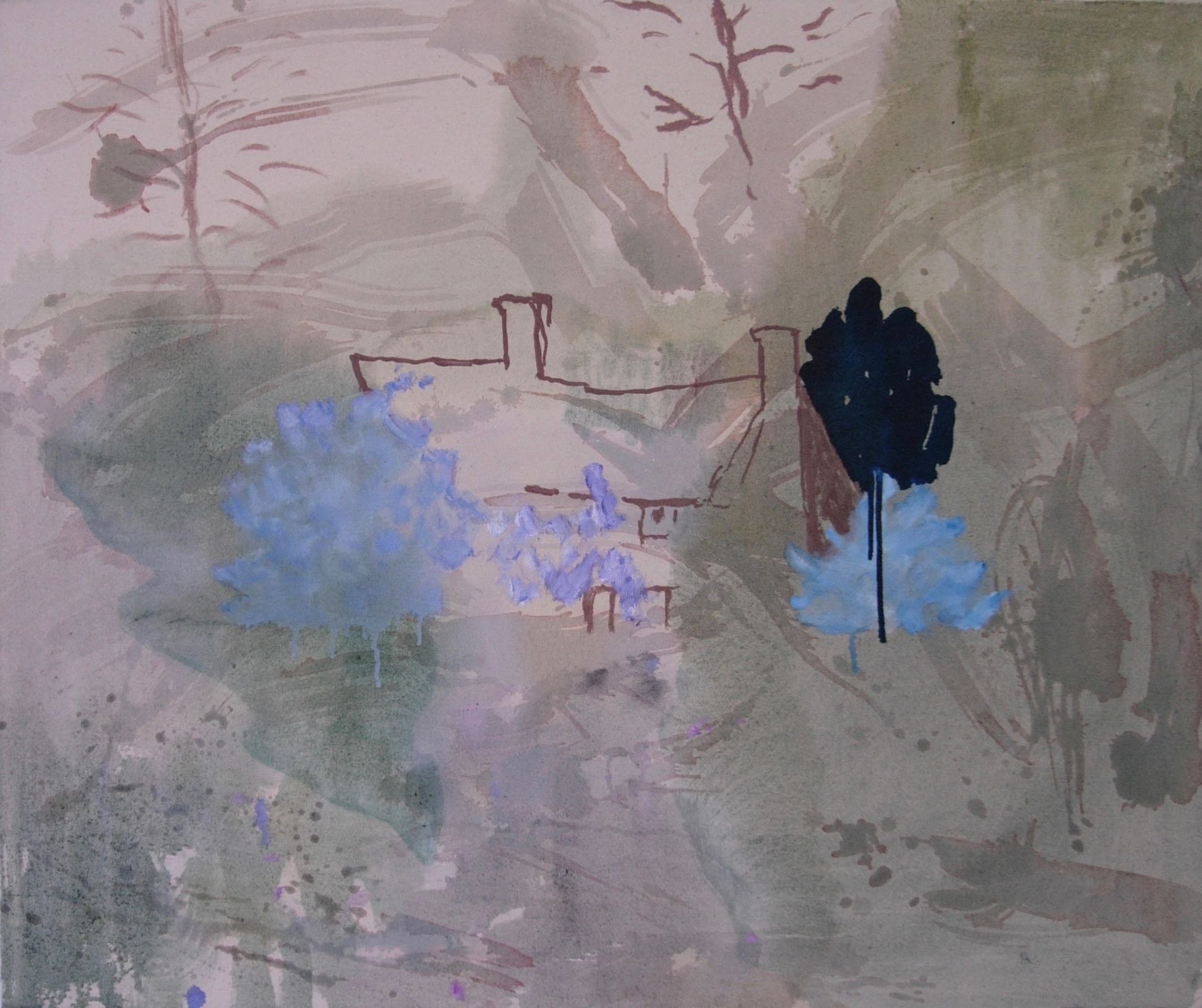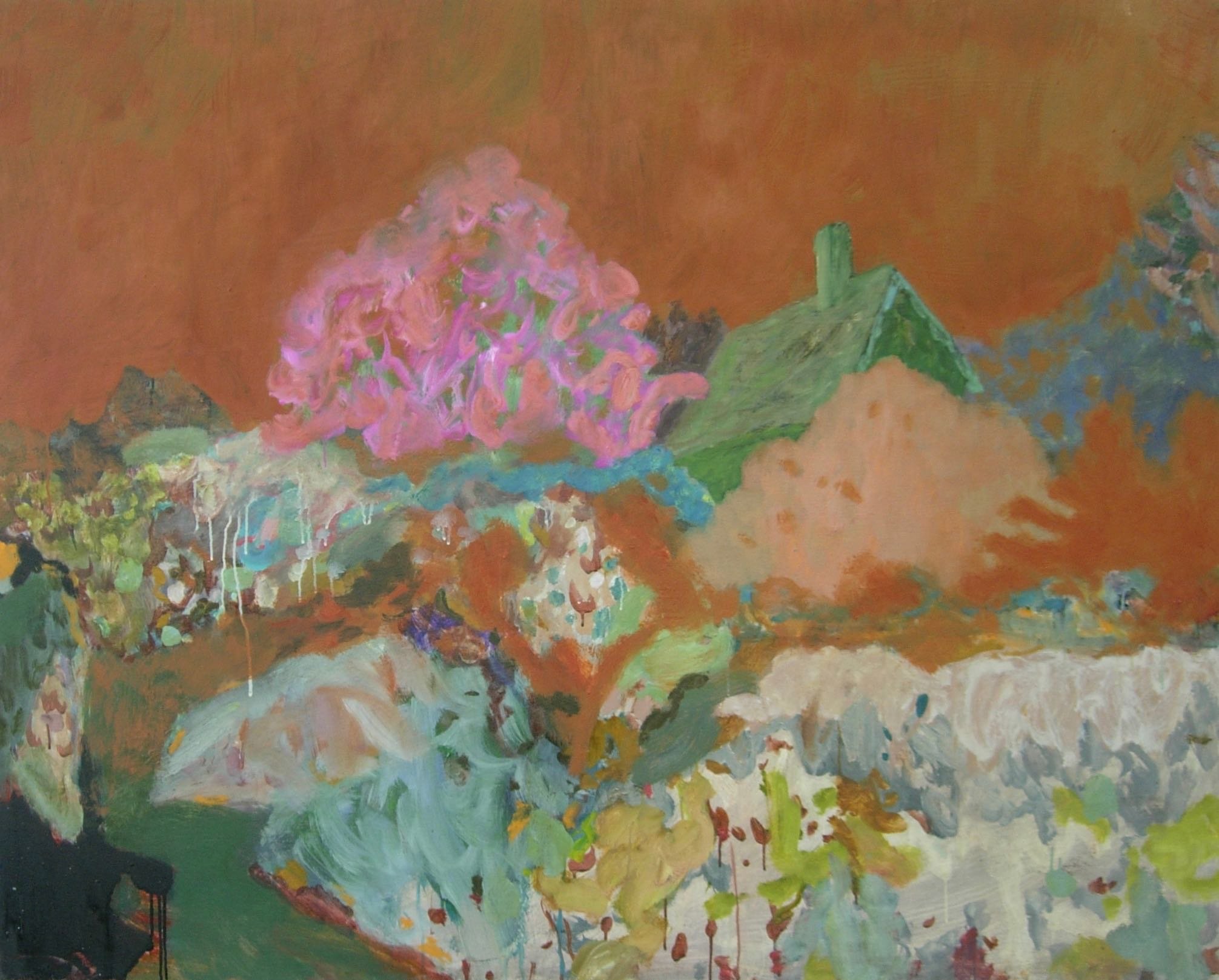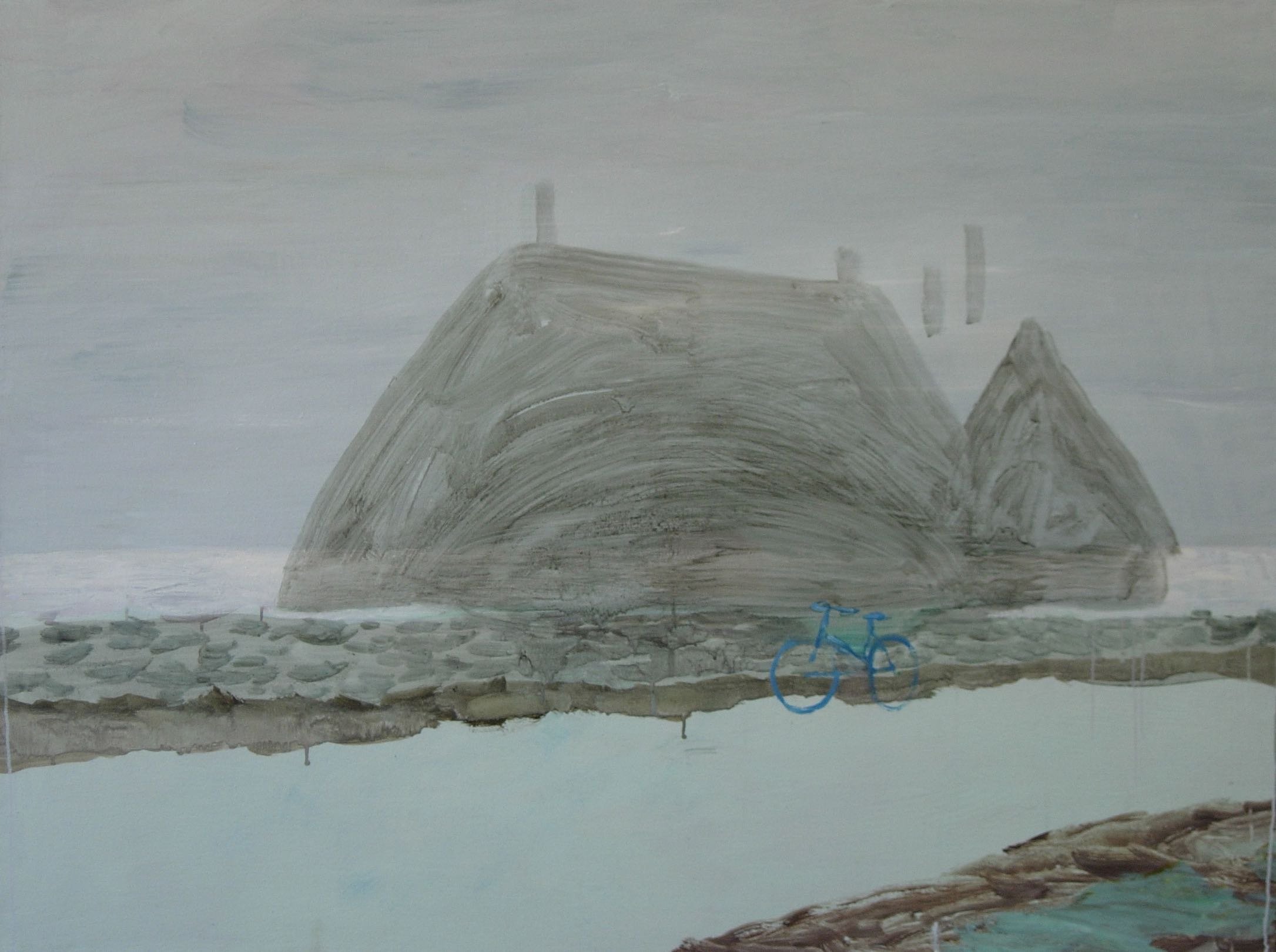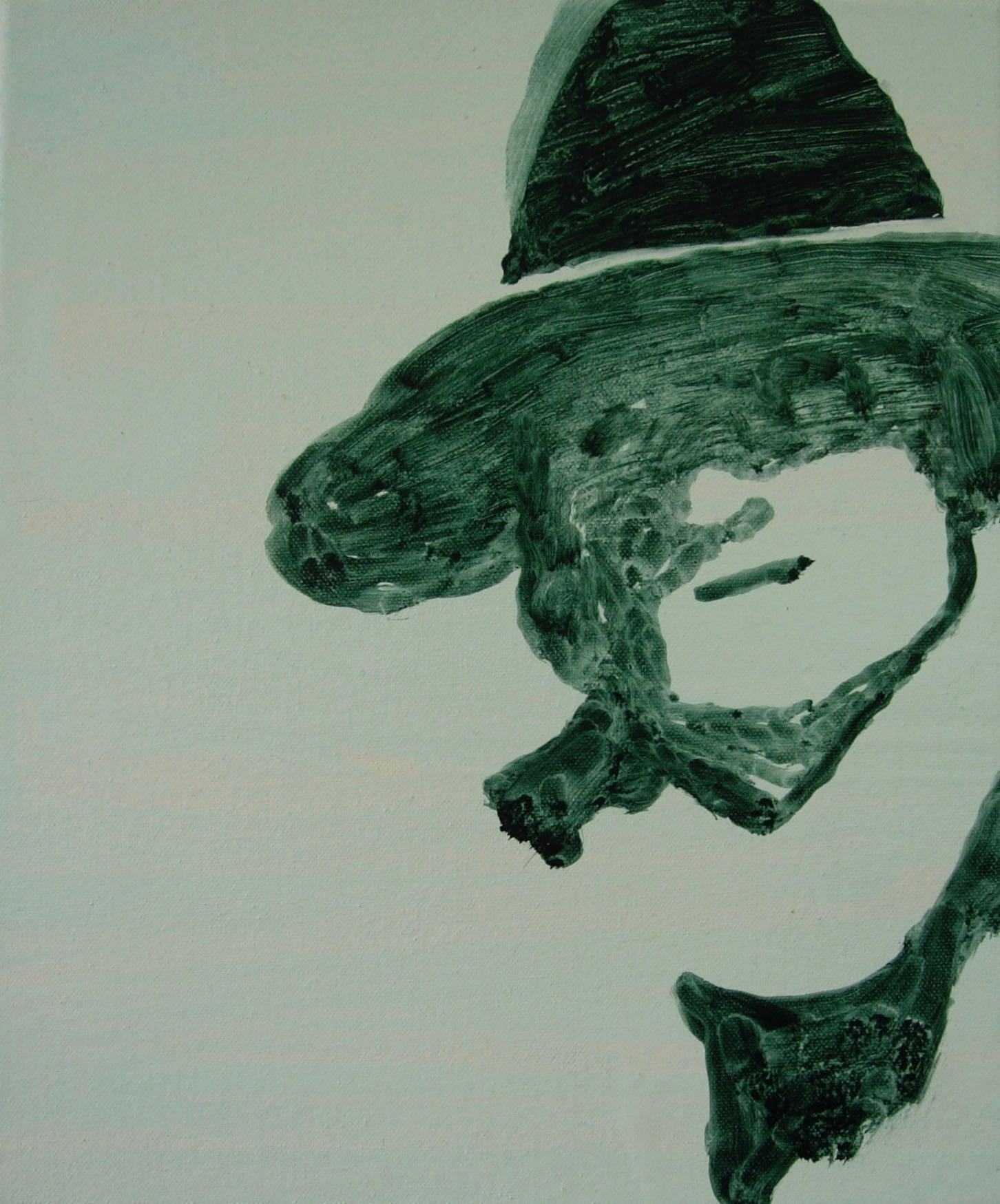My Grandmother’s House
My grandmother’s family came from Northiam in East Sussex. They were brought up in a house called Little Dixter, which I believe was a cottage tied to the Dixter estate, where they would also have been labourers. I have a photo of them taken in the garden. I visited Northiam not long ago and walked down the track that leads to Little Dixter. It was late afternoon; the sun was going down and the house, the view, the countryside around seemed hardly to have changed since the photo was taken in the first years of the 20th century. I thought of my grandmother, a timid woman who cycled up hills and walked down them, and the course her life had taken. She had moved away from the protection of her family, the house, the village and had ended up living in north London with my grandfather and her two daughters.
Very few of these paintings depict my grandmother’s actual house; most use as a model the paintings of the Victorian painter, Helen Allingham. In reality the cottage, like the grandmother, like, indeed, ‘the feminine’, can be both stifling and nurturing, both enchanting and repellent. The cottage is a motif central to cultural identity because, I would argue, of this relationship with the maternal.
The idea of My Grandmother’s House seemed rich in meaning. In my fantasy My Grandmother’s House will always be a cottage with a garden like Helen Allingham’s 19th century paintings of cottages which are consigned, like so many of the feminine decorative arts, to Twee-town. Unlike the architecture of the wealthy, cottages enclose and protect, like a hen, like a mother. They can offer nurturing and comfort but, conversely, they may offer a sickening, stultifying claustrophobia. They represent two aspects of the feminine.
My interest goes deeper than the anecdotal. I am interested in the experiences of my mother and grandmother because they represent the attitudes and experiences of women of their generations. I’m interested in them because they are what have shaped me.
EM 2006
